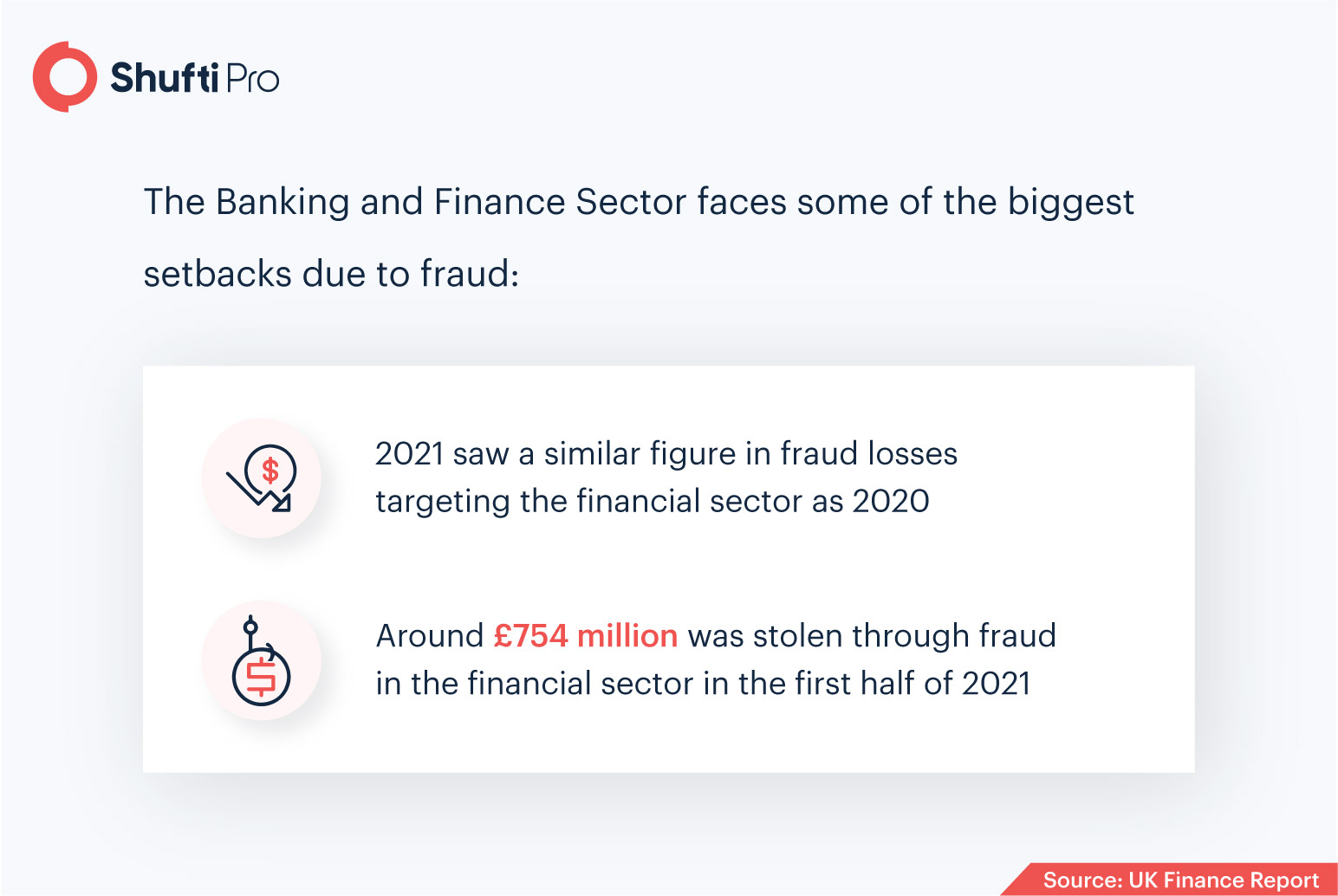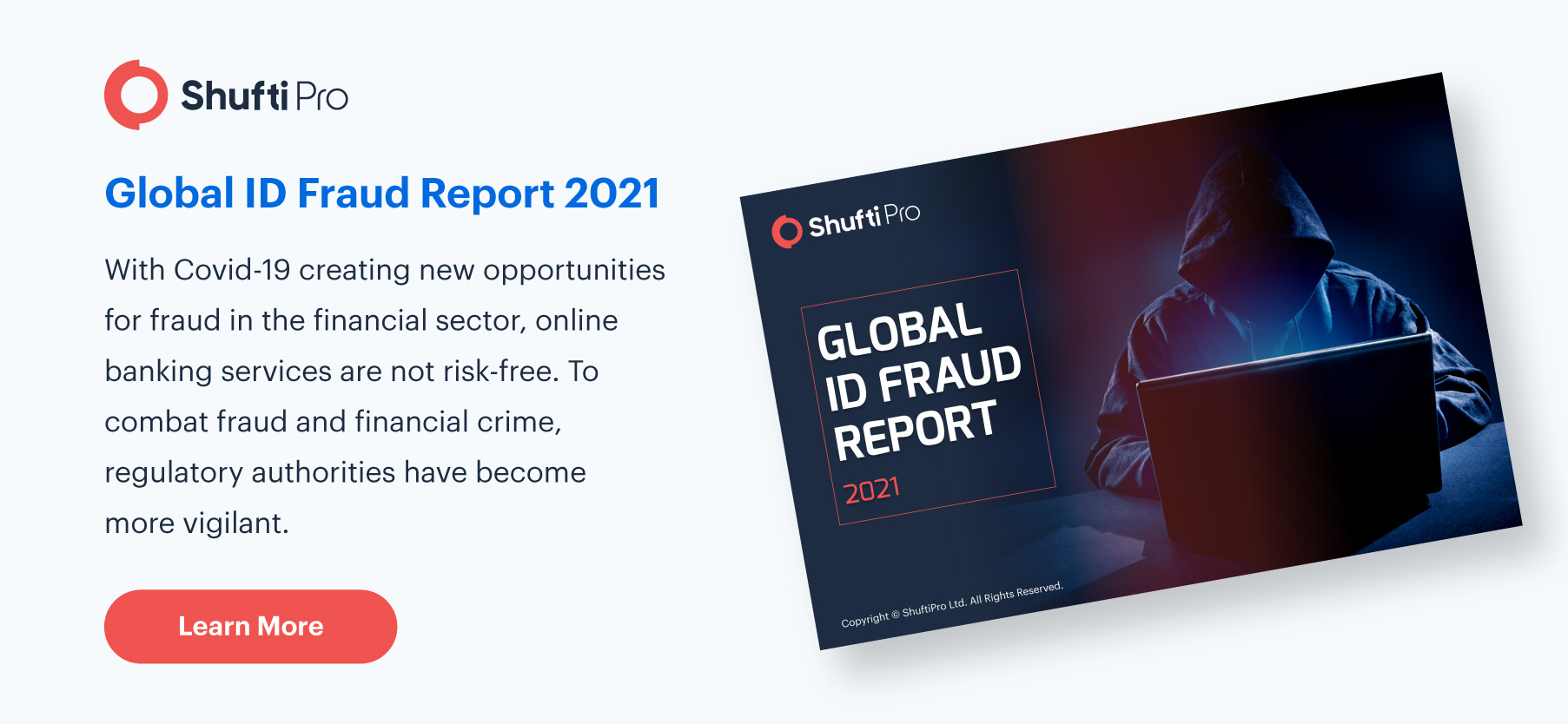The Trade-off Between Fraud Losses and Compliance Costs in the Banking Sector

The modern era’s demand for digital-first services in sectors ranging from e-commerce, online dating, and investment creates new opportunities for fraudsters and financial criminals to succeed in their illicit motives. While fraud and money laundering is nothing new to the financial sector, it continues to be one of the major issues faced by banks.
Financial institutions that do not keep up with the pace of evolving technology and compliance regulations end up losing quite a lot of their valuable funds. According to a recent study, banks were targeted by more monthly fraud attacks in 2021 as compared to 2020.
Risks for Financial Institutions
In the traditional banking system, customers would have to visit the branch for account opening and went through several steps for identity verification. However, online customer onboarding systems have changed the process, making it a much more risky business. Online identification of customers’ identities in banking has proven quite expensive in terms of both financial losses and AML compliance penalties.
With fraudsters coming up with innovative techniques to manipulate the digital platforms of banks, a significant spike in fraud attacks was seen in the last year. Banks making an annual revenue of more than $10 million became victims of 2,320 fraud attacks in 2021, as compared to 1,977 in 2020. This wasn’t the only number that increased either, as US financial service providers reported a $4.00 cost of recovery from fraud. The fraud cost in 2020 before the Covid-19 outbreak was $3.64. Fraud costs include the internal recovery costs, the amount for which the financial institution is held liable, legal penalties, and investigation costs.
Furthermore, online banking platforms had to deal with 33% of US banks’ fraud costs in 2021, compared to 26% in 2020. Similarly, mobile transactions accounted for 29% of fraud costs as compared to 20% in the previous year. Not surprisingly, the only medium for banking services that accounted for lower costs in 2021 was in-person banking. The study also revealed that there are several different types of fraud affecting each and every stage of customers’ banking experience – beginning with account opening to registration and all the way to making transactions or applying for loans.
That being said, funds’ distribution was identified by 43% of the respondents of a survey about US banks as being the stage that is most vulnerable to fraud. Account registration and login were found to be the second most vulnerable to fraud as banks reported that accurate identity verification is a real challenge when it comes to mobile devices at any given stage of a customer’s banking journey.

Regulatory Pressure and Compliance Penalties
Based on research reports, user experience is the top priority of almost 70% of the customers when they choose between different products and services. Keeping the facts and the numbers in front of them, online banking platforms are now focusing their efforts on improving customer experiences and offering the most seamless services, particularly in the onboarding stage. However, this process isn’t free of regulatory requirements and obligations.
Banking processes are flooded with obligations of performing identity verification, transaction monitoring, and AML screening of their clients during the onboarding process. The process of customer due diligence requires banks to incorporate AI-driven solutions that prevent illegitimate entities from accessing digital banking services.
Know Your Customer (KYC) is crucial in online banking not only for the purpose of onboarding legitimate clients but also for fulfilling the requirements of regulatory authorities. Regulatory laws like the Health Insurance Portability and Accountability Act of 1996 and the Family Educational Rights and Privacy Act urged tech specialists to develop on-premises identity verification solutions that could be deployed only once. These robust verification techniques empower the banks of today with an extra layer of security that they need to establish lasting trust relationships with their customers.
Money Laundering – A Major Issue for the Banking Sector
Banks and financial institutions face the constant threat of becoming involved in money laundering and getting fined by regulatory watchdogs. The Financial Action Task Force (FATF) and the Financial Conduct Authority (FCA) are only two of the many regulatory authorities that have repeatedly sent warnings and fined some of the most prominent banks throughout the world. These financial regulators serve the purpose of securing banks and their customers from fraud, money laundering, and terrorist financing.
The FATF recently issued a warning to UAE for shortcomings in its AML compliance framework. The watchdog conducted discussions to place the UAE on the “grey-list” for failure to identify and prevent money laundering and terrorist financing.
Suggested read: FATF to “Grey List” UAE for AML Failings
Several loopholes in the banking and finance sector are revealed when a financial watchdog takes such an action against a bank in order to eliminate the chances of money laundering. The lack of satisfactory AML measures opens doors for fraudsters to use the bank as a channel to clean their illegally obtained funds.
Account Takeover Fraud
One of the sources through which financial criminals try to involve banks in their illicit schemes is account takeover fraud. Taking over an account at a given bank account can be done through hacking, stealing, phishing scams, or asking for account details for a given price. Once they enter the system, perpetrators have free will to layer and channel through their black money and convert it into legal funds. This ‘hidden’ technique of channeling money allows fraudsters to steer clear of regulatory watchdogs. However, such activities are often identified later on. To overcome the problem of account takeovers, banks are offered online identity verification solutions that enable them to protect their reputation as well as their customers’ money.

Digital Onboarding
At the very beginning of a customers’ banking journey, the account opening is the stage where identity fraud is prevalent. Here, the absence of an accurate identity verification solution can mean an open route for fraudsters to access the system by using stolen/fake identities.
On-site Fraud
It can’t be said that the next stages after digital onboarding are fraud-free either. This is because once an illegitimate entity has bypassed verification to breach the system at the onboarding stage, they can easily get through verification steps at the actual branch of the bank and carry out transactions. Considering the various tools and technologies to prevent fraud and financial crimes in the banking sector, it’s up to the institution to find the balance between compliance penalties and fraud losses.
Key Takeaways
Eliminating the chances of fraud by following AML compliance guidelines enables financial institutions to streamline their processes and makes it easier for customers to trust the security of their services. For banks that struggle to develop the most optimum solutions for their clients, Shufti offers an identity verification solution that supports 150+ languages in 230+ countries.
In this way, banks can close down the loopholes in their customer verification systems.
Want to learn more about Know Your Customer compliance for your financial institution?










